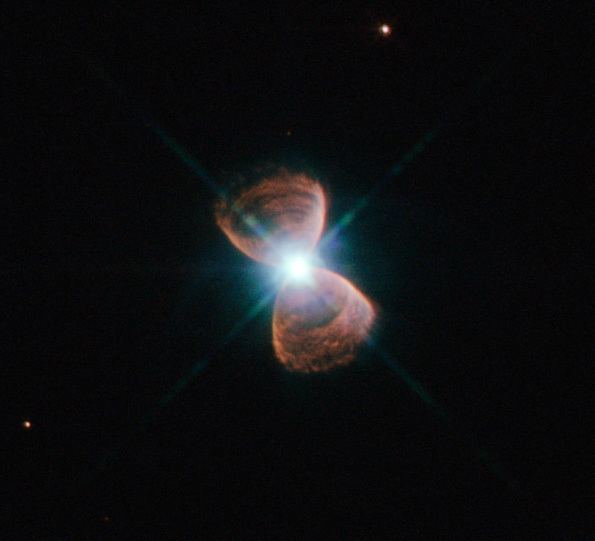 | ||
A bipolar nebula is a distinctive nebular formation characterized by an axially symmetric bi-lobed appearance.
Contents
Many, but not all, planetary nebulae exhibit an observed bipolar structure. It may be that the two types of nebulae are directly related, one preceding or superseding the other in the evolution of the nebula.
Formation
Though the exact causes of this nebular structure are not known, it may be related to the physical process known as bipolar outflow in which a star ejects highly energetic streams of outflow along both poles. One theory states that these outflows collide with material surrounding the star (either stellar dust, or shells of matter sloughed off in a prior Supernova event).
Examples
References
Bipolar nebula Wikipedia(Text) CC BY-SA
